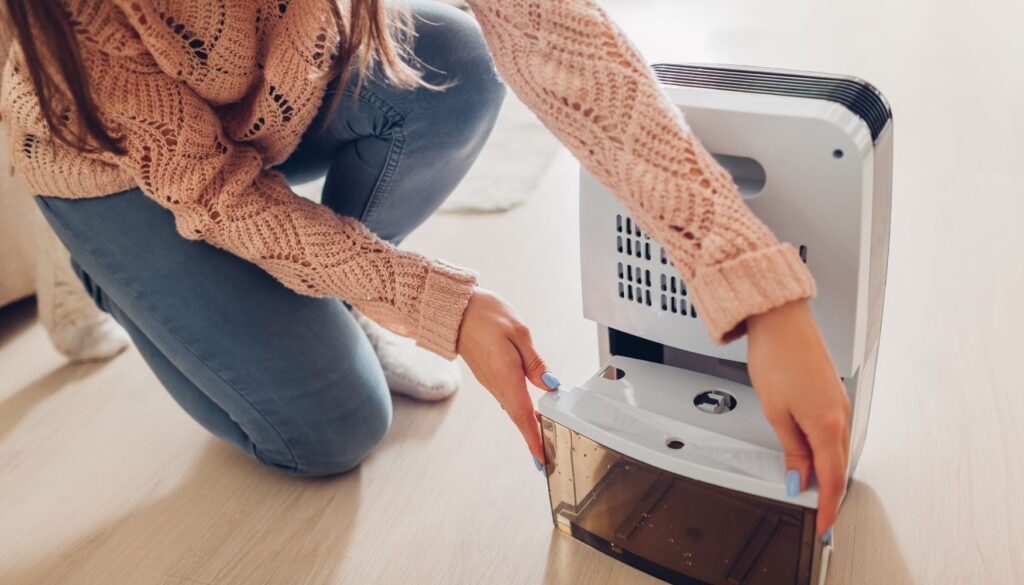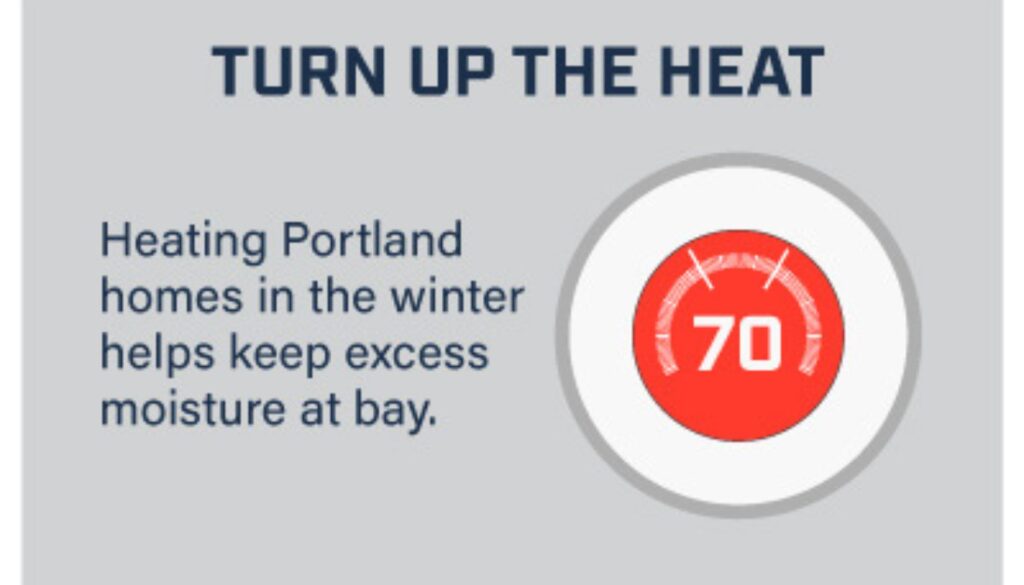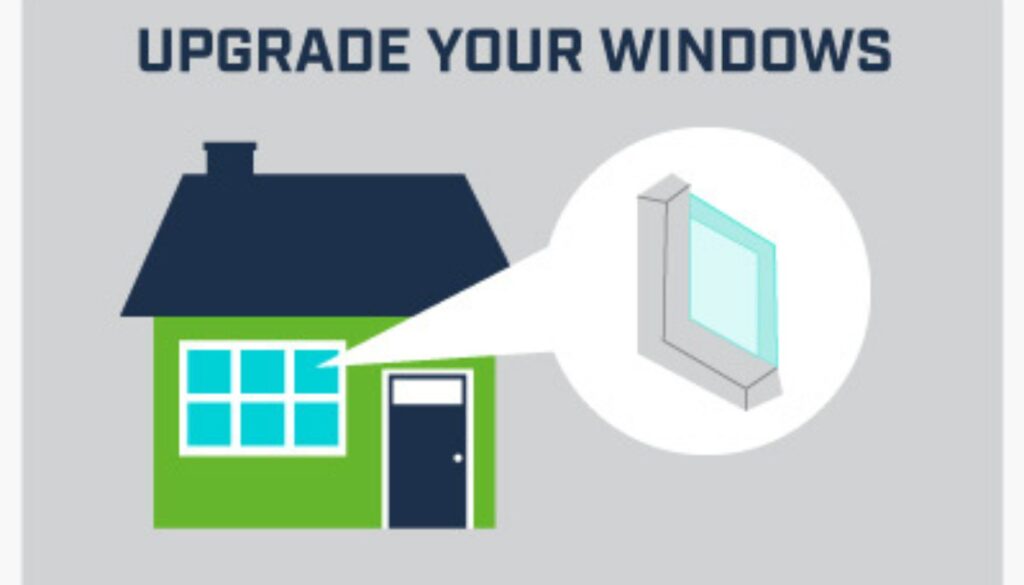
Published September 17, 2024 by Tony Spezza
When winter hits, it brings with it (sometimes unwanted) changes in temperature, weather, and comfort. You might notice condensation forming on your windows, drafts underneath your doors, or stuffiness in your bedroom while you’re trying to sleep.
Knowing how humid your home is and ways to help control it can help you experience a more comfortable and enjoyable winter, leaving both you and your home healthy and happy through the colder months.
Learn the best humidity level for your home in the winter and tips for achieving and maintaining it here.
Table of Contents
- What Is the Best Humidity Level for Your Home in the Winter?
- 6 Signs of High Humidity Levels in Your Home
- How To Reduce Humidity in Your Home in the Winter
- Prepare Your Home for Winter Humidity With AAA Heating and Cooling
What Is the Best Humidity Level for Your Home in the Winter?
No two homes are the same, but ideally, a level between 30-40% humidity is ideal for keeping your home warm and comfortable in the winter.
Dry indoor air in the wintertime might be caused by many factors — lower temperatures, a leaky house, etc. — but working to achieve an ideal humidity percentage in your home may keep you happier and healthier all winter long.
Why Maintaining an Ideal Humidity Level Is Important
Humidity levels that are both too high and too low affect the health of you and your home.
Relative humidity levels that are too low not only make it easier to get sick because bacteria and viruses can survive longer in dry conditions, but they may also cause:
- Dry skin
- Itchy eyes
- Sore throat
- Sneezing
- Cracked lips
When it comes to your home, low humidity levels can damage wooden floors or furniture, causing them to crack, splinter, or shift.
Humidity levels above 50% can promote mold growth, dust mite infestations, rot, corrosion, and water stains.
Let AAA Heating and Cooling help keep your home and family healthy with our many HVAC system installations, maintenance capabilities, and more.
6 Signs of High Humidity Levels in Your Home
#1: Condensation on Windows
Poor indoor air quality (including high humidity levels) often causes condensation on your home’s windows because of a lack of ventilation. When the warm air inside your home touches the glass that is much colder, it creates condensation.
Although on its own, condensation isn’t a big problem, it can lead to mold growth or begin to cause damage if the root problem isn’t addressed.
#2: It Feels Muggy, Clammy, or Sticky
Another result of poor ventilation is the sticky, clammy, muggy feeling you might experience inside your home when humidity levels are too high and the temperature outside is colder.
#3: Musty Odor
One of many factors — or a combination of a few — could result in a musty odor inside your home during the winter:
- Poor air circulation
- Dirt and debris
- Temperature differences
- Moisture
- Mold/mildew
When your home is closed up tight to keep the cold air out, ventilation can be limited. If it’s not too cold outside in the winter, crack open the windows to improve airflow and rid your home of the musty smell. You can also try having your HVAC serviced or using an air purifier during the winter months.
#4: Allergy Symptoms
Although many battle allergies year-round, you might be surprised to see an uptick in symptoms during the winter months when you’re spending most of your time indoors.
When your doors and windows are kept shut, indoor allergens can trigger. You could experience:
- Sneezing
- Coughing
- Postnasal drip
- Chest tightness
- Throat soreness
- Itchy, watery, or swollen eyes
- Runny, stuffy, or itchy nose
The cause? Mold building up in pipes, pet dander, dust mites, or recycled particle-filled indoor air can all be culprits.
#5: Mold Growth
Decreased ventilation seems to be the root cause of many issues related to indoor humidity in the winter months, and the same is true for mold growth. With decreased ventilation comes a lack of airflow, trapping moisture indoors and creating a breeding ground for mold.
#6: Water Stains
When it’s too humid inside your home, the hot air comes into contact with the colder air ducts and often causes condensation. When this leaks onto your ceiling, water stains will form. If left undetected, this can quickly lead to mold growth.
How To Reduce Humidity in Your Home in the Winter
Knowing the source of the moisture is key to understanding the best way to help reduce humidity levels in your home during the winter. With a targeted approach to resolving the issue, you’ll have better success at achieving a healthy and comfortable living space all winter long.
Common culprits of excess moisture include:
- Poor or improper ventilation
- Not using exhaust fans in the kitchen or bathroom
- A leaky roof
- A damp basement
- Too many water-loving houseplants
- A poorly sized HVAC system
- An HVAC in need of repairs
- Storing freshly cut wood indoors
Once you’ve identified the source of the problem, you can look into reducing moisture build-up. There are several natural ways to reduce humidity levels, but you can also implement simple practices around your home that will help decrease levels.
Houseplants
With the right plants in your home, you can add moisture to the indoor air. Through evapotranspiration, many plants are capable of this job, including:
- Spider plant
- Jade plant
- Areca palm
- English ivy
- Lady palm
- Rubber plant
- Boston fern
- Peace lily
- Golden pothos
- And more
Hang Dry Laundry
Instead of running your dryer, hang your wet clothes around your home. As the water evaporates from the clothes, it releases moisture into the air, helping to combat the common dry indoor winter air.
Cool Bath Water Before Draining
Before sending your warm bath water straight down the drain, let it sit in the bathtub while it cools off. As it cools, the bath water evaporates, lending to increased moisture levels in the air.
Turn Up the Heat
Heating your Portland home in the winter helps keep excess moisture at bay. Because warm water holds moisture, your home should not be overly humid to begin with or you’ll turn it into a sauna, which will only compound the problem. Instead, use dry heat and ensure adequate airflow when warming your home.
Use a Dehumidifier
Dehumidifiers dry water out of the air, speeding up the natural evaporation process. Dehumidifiers come in a variety of sizes, from portable so you can move them from room to room to fixed features in your HVAC system.
Keep Gutters and Downspouts Clear
When your gutters and downspouts get backed up and clogged, rainwater doesn’t properly drain away from your home. Keeping them clear and ensuring downspouts are directed away from your home are simple steps to reduce moisture.
Insulate Pipes
Exposed pipes inside your home are prone to sweating, creating excess moisture. By insulating them, you’ll help prevent sweating and protect them from potentially freezing and bursting in cold weather.
Upgrade Windows and Doors
High-efficiency windows, such as double pane windows or windows with insulating film, help reduce energy exchanges in the winter, making them less likely to get foggy. By making this upgrade and ensuring your weather stripping and caulking are in good shape, you’ll effectively keep the moisture out.
Prepare Your Home for Winter Humidity With AAA Heating and Cooling
Your home is a big investment. Staying on top of maintenance processes will help reduce costly repairs and prolong its life.
AAA Heating and Cooling has over 50 years of exceptional service. Our team of professionals is equipped with the skills and knowledge to help keep your HVAC in tip-top shape to ensure a healthy and comfortable living environment during cold winter months (and all year around, too).
Contact our team today to schedule a consultation for your Portland home furnace services.



